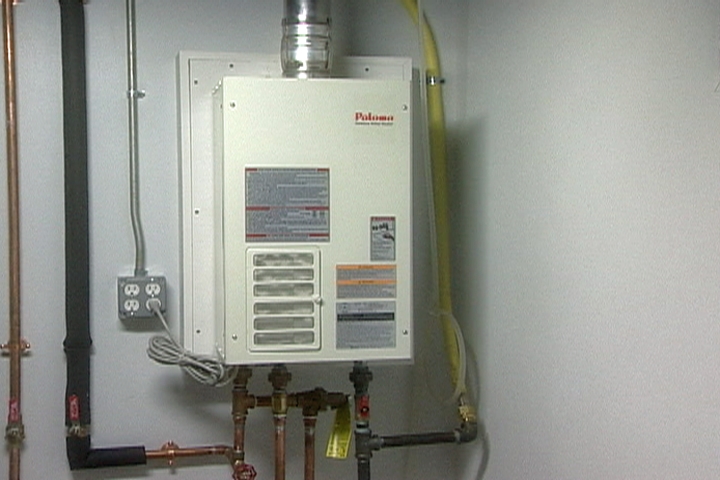Ways to Effectively Maintain Your Home's Hot Water System
Ways to Effectively Maintain Your Home's Hot Water System
Blog Article
This great article down the page in relation to Water Heater Maintenance Tips You Can't Afford to Forget is rather entertaining. Read on and draw your own ideas.

Hot water is necessary for daily convenience, whether it's for a refreshing shower or cleaning dishes. To guarantee your warm water system runs effectively and lasts much longer, routine upkeep is crucial. This article supplies useful pointers and insights on just how to preserve your home's warm water system to prevent disturbances and expensive fixings.
Introduction
Preserving your home's warm water system may appear difficult, yet with a few straightforward steps, you can guarantee it operates smoothly for many years ahead. This guide covers every little thing from understanding your warm water system to do it yourself maintenance ideas and knowing when to employ professional assistance.
Relevance of Maintaining Your Warm Water System
Normal maintenance not just expands the lifespan of your warm water system yet also guarantees it runs efficiently. Overlooking maintenance can bring about decreased effectiveness, greater power bills, and even early failing of the system.
Signs Your Warm Water System Demands Maintenance
Knowing when your warm water system requires focus can avoid major concerns. Keep an eye out for signs such as inconsistent water temperature level, weird noises from the heater, or rustic water.
Purging the Hot Water Heater
Purging your water heater removes sediment accumulation, boosting performance and prolonging its life.
Checking and Replacing Anode Rods
Anode rods stop rust inside the storage tank. Evaluating and changing them when worn out is essential.
Complex Problems Calling For Specialist Help
Examples include major leaks, electrical issues, or if your water heater is continually underperforming.
Routine Professional Maintenance Benefits
Specialist upkeep can include comprehensive evaluations, tune-ups, and guaranteeing compliance with security requirements.
Examining and Changing Temperature Settings
Adjusting the temperature settings ensures optimal performance and security.
DIY Tips for Maintenance
You can perform several upkeep jobs on your own to maintain your warm water system in top condition.
Checking for Leakages
Consistently inspect pipelines and links for leakages, as these can result in water damage and higher costs.
Recognizing Your Hot Water System
Prior to diving right into upkeep tasks, it's useful to understand the standard parts of your warm water system. Usually, this includes the water heater itself, pipelines, anode poles, and temperature controls.
Monthly Upkeep Tasks
Routine regular monthly checks can help capture small problems prior to they intensify.
Testing Stress Alleviation Valves
Evaluating the pressure safety valve guarantees it functions appropriately and stops extreme pressure build-up.
Protecting Pipes
Shielding warm water pipes lowers warm loss and can conserve energy.
When to Call a Professional
While do it yourself maintenance is beneficial, some concerns need professional know-how.
Conclusion
Normal maintenance of your home's warm water system is necessary for efficiency, long life, and expense financial savings. By complying with these tips and recognizing when to seek specialist assistance, you can make certain a dependable supply of warm water without unforeseen disturbances.
How to Maintain an Instant Hot Water Heater
Before tinkering with your hot water heater, make sure that it’s not powered on. You also have to turn off the main circuit breaker and shut off the main gas line to prevent accidents. Also turn off the water valves connected to your unit to prevent water from flowing into and out of the appliance. 2. When you’re done, you have to detach the purge valves’ caps. These look like the letter “T†and are situated on either side of the water valves. Doing so will release any pressure that has accumulated inside the valves while at the same time avoid hot water from shooting out and burning your skin. 3. When the purge valves’ caps are removed, you have to connect your hosing lines to the valves. Your unit should have come with three hoses but if it didn’t, you can purchase these things from any hardware or home repair shops. You can also get them from retail stores that sell water heating systems. Read the user’s manual and follow it to complete this task properly. When the hosing lines are connected, open the purge port’s valves. 4. You should never use harsh chemical cleaners or solutions when cleaning your unit. Make use of white vinegar instead. It should be undiluted and you’ll probably use about 2 gallons. 5. Now flush your water heater. This task should probably take about 40 minutes. We can’t give you specific directions for this because the procedure is carried out depending on the type, model and brand of your heater. With that being said, refer to the user’s manual. 6. When you’re done draining the unit, you have to turn off the purge port valves again. Remove the hosing lines that you earlier installed on each of the water valves. Put the valve caps (purge port) back in their respective places and be very careful so as not to damage the rubber discs that are found inside these caps. 7. Now that everything’s back in place, check your user’s manual again to find out how to reactivate your water heating system. 8. Once it is working, turn one of your hot water faucets on just to let air pass through the heater’s water supply pipes. Leave the tap on until water flows smoothly out of it. https://www.orrplumbing.com/blog/2014/september/how-to-maintain-an-instant-hot-water-heater/

As a reader on Tips on Maintaining a Water Heater, I assumed sharing that chunk was really helpful. In case you enjoyed our blog entry kindly don't forget to share it. I appreciate your readership.
Request Free Estimate Report this page